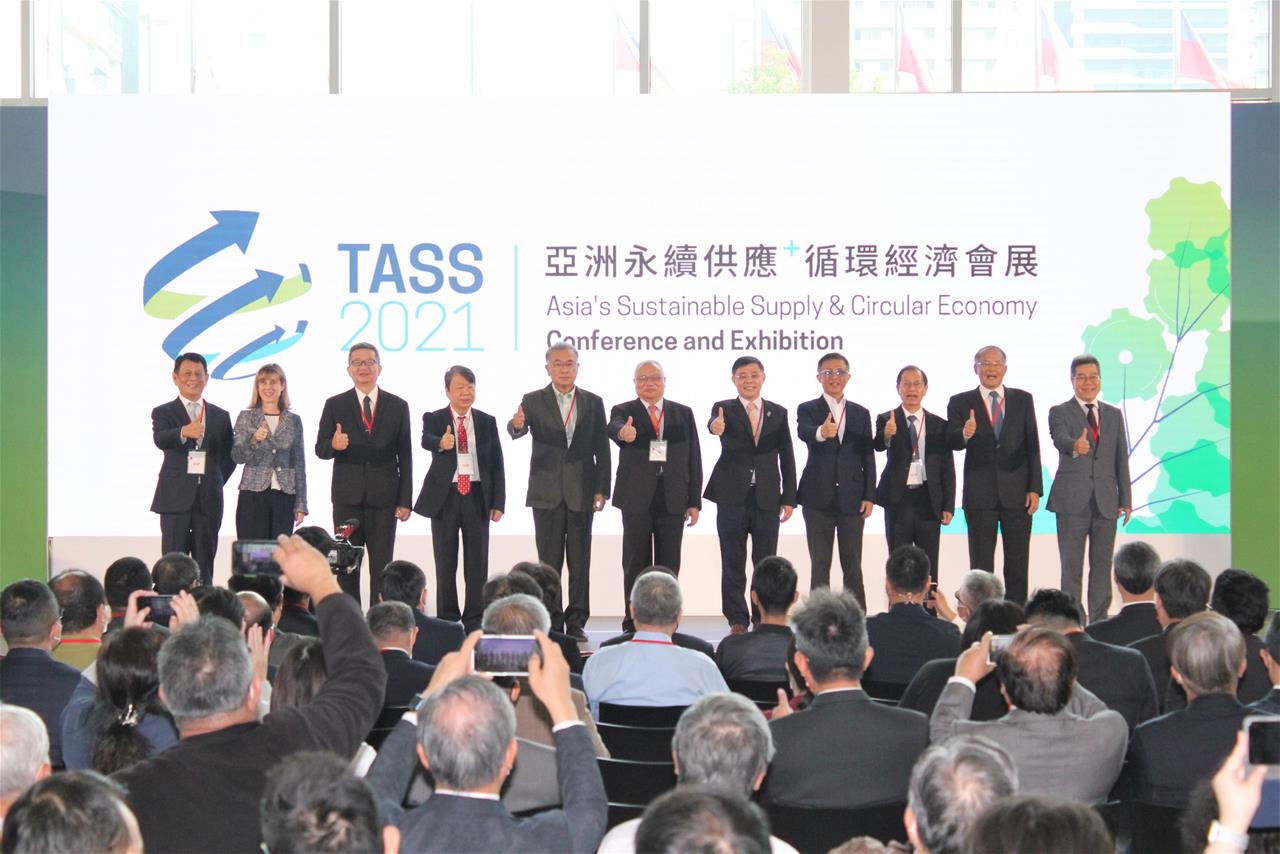
TASS 2021, Asia's Sustainable Supply & Circular Economy Conference and Exhibition (11/10 - 11/12), ended on a wonderful note at the Kaohsiung Exhibition Center in early November 2021. Opening remarks were delivered on 11/10 by Shu-Shin Lai, Chairman of the Taiwan Alliance for Sustainable Supply (TASS). This was followed by a 4K live-action holographic appearance by Wen-Sheng Tseng, Deputy Minister of the Ministry of Economic Affairs (MOEA). Appearing almost live in person at the Kaohsiung Exhibition Center, Tseng expressed that the government does its utmost to promote circular economy, and hopes that with the help of the 256 members of Taiwan Circular Economy 100 (TCE100), its principles can be introduced into the supply chain as quickly as possible. By demonstrating the concrete results that Taiwan has achieved in circular economy, he stated, we can establish a mutually beneficial model of circular economy and sustainability that gives Taiwan a competitive advantage.
Following the opening remarks, convention guests were invited to visit MIRDC (Metal Industries Research & Development Centre) booth. The Centre’s highlight this year was “Renewable Polymorphic Transition Materials”. Traditional molds for shell mold casting have been predominantly imported and single-use only, preventing recycle and reuse. This results in approximately 1.4 million tons of annual waste foundry sand that is outsourced for disposal. In the stone processing industry, almost 500,000 tons of off cut waste (silicon dioxide) produced every year, most of which simply stored and dumped. Likewise, the aquaculture industry also produces about 160,000 tons of oyster shell waste (calcium carbonate). To address these industry pain points, existing waste materials from our surroundings can be used as basic building blocks, transforming stone and oyster shell waste into reusable, high-quality composite material. This material can then be applied to domains such as industrial casting and ocean restoration.
Through manipulation of the manufacturing process, this composite material can be used to make recyclable, highly heat-resistant ceramic shell molds. Furthermore, its water collapsibility allows molds to be flushed out with water after casting, allowing the material to be repeatedly reused. It can also be combined with 3D printing technologies for applications such as coral and historic building restoration. As explained by Chiu-Feng Lin, President of MIRDC, aside from already transferring this technology to the industrial casting sector, successful collaboration has also been carried out with the National Museum of Marine Science & Technology. Due to similarity of the composite material with the natural constitution of corals (both are composed of calcium carbonate), marine microorganisms have successfully attached to artificial coral reefs and islands. This expedites attachment of symbiotic deep-sea algae, significantly enhancing coral restoration, and in the future can even be expanded to large-scale artificial reefs, contributing back to the marine ecosystem.
MIRDC also presented 15 Technology Development Program (TDP) research results from the Department of Industrial Technology, MOEA, under the topic of “Cyclic Metals — Pioneering the Future”. These included projects like clean, low energy consumption friction stir welding (FSW) technology, which incorporates green production techniques right from the design stage to the finished product. The 360 degree, 3D curved surface FSW technology solves many problems commonly encountered when joining aluminum alloy measuring devices with traditional arc welding. The latter approach suffers from poor joining strength and porosity defects during welding, as well as considerable post-welding distortion, reducing the accuracy of signal-source measurements. Thanks to the development of special, highly heat-resistant multicomponent alloy tooling materials, the FSW tool is able to withstand welding temperatures of up to 800-1000℃, with a 20% increase in weld strength and 30% increase in FSW tool service life. Energy consumption during the manufacturing process is also reduced by 40%. Through approaches such as digitization, energy conservation, low-pollution key technologies, and renewable aluminum, the Centre has succeeded in helping the information technology and communication industries develop crucial signal field measuring technologies, break into the international supply chain, and realize circular economy principles through green industry.